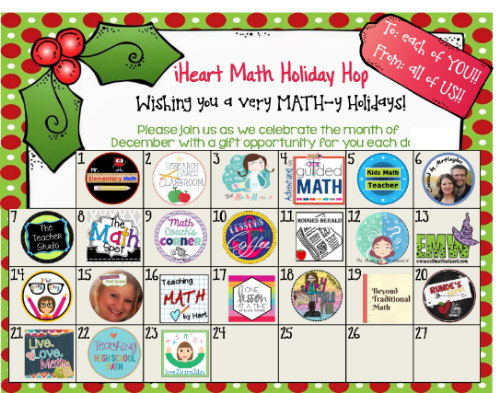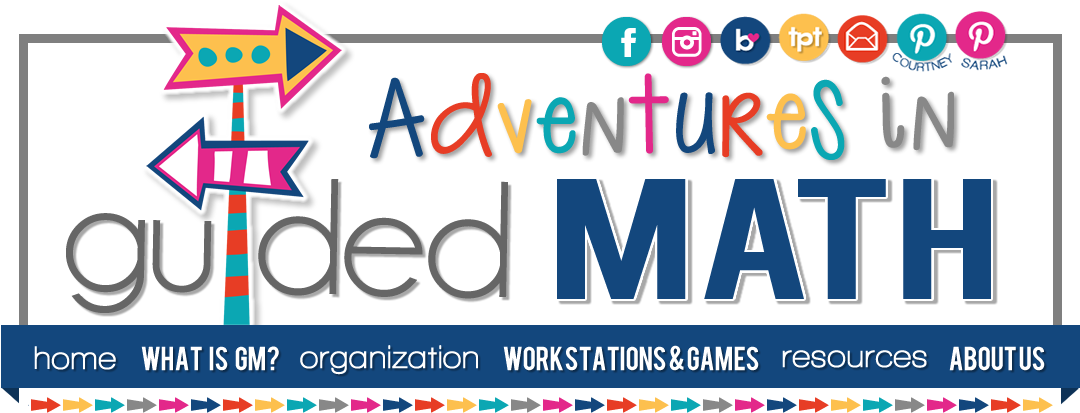Welcome to another wonderful math blog hop! This blog hop is devoted to place value and will not disappoint--so after reading this post, take a hop around to see what goodies you will find!
Place value--a huge topic, and such an important concept for ALL ages!
As a second grade teacher, place value is at the heart of much of our explorations in math throughout the year. Since I cannot possibly put everything I feel to be important about place value into this post, I will focus on some MUSTs in helping my students understand place value and build a solid foundation for what will follow.
THE POWER OF 10!
We as teachers know the power of 10 in our number system and how an understanding of 10 is a ESSENTIAL for building an understanding of hundreds, thousands, and so on. I make a point of mentioning the power of 10 to my students DAILY! Any chance I get, I recite the words, "Ha--the POWER of 10!" in a sinister witch-like cackle. They always chime in afterward! :0) In the beginning of the year, it's a mixed bag as far as students' understanding that 237 has 23 tens and that 23 tens is the same as 230. I like to use various prompts for students to agree or disagree with that require their use of 10. Here is a picture of our Bright Ideas board and the first math prompt I gave this year (the board is used for all content areas). You can see the diversity of understanding with some thumbs being in the middle to show an inability to decide. Prompts such as these bring with them wonderful discussions and students must justify their thinking.
PLACE VALUE TOOLS!
When I say tools, I mean beans, linking cubes, straws, ten frames, base ten tools, place value arrows, place value discs, an open number line, etc. Representing numbers in multiple ways is a MUST!
At the same time, I feel it is also important for students to understand the power of different tools as well as their limitations. An example--from the very first day of school, we do Daily Math (includes a number of the day) as a large group (this eventually leads to work in guided math rotations). We begin with two digit numbers and eventually progress to three digit numbers. In the beginning we use ten frame tools (small individual ten frames) to represent numbers. The ten frame is a familiar tool used in kindergarten and first grade, so this is a great place to begin. As we venture into representing greater numbers, students begin to understand the limitation of using ten frames for representing and drawing ten frame models. The tools become less efficient/appropriate in this way, so a different tool is introduced (base ten tools). We talk about each tool, their benefits and drawbacks. We NEVER say a tool is BAD---or that it is WRONG to use a particular tool, but I feel it is important for students to understand the differences between tools and their effectiveness/applications. Furthermore, I never begin using a tool with students, such as base ten tools or place value discs, unless they have a conceptual understanding of each disc's value.
Tools are ALWAYS readily available for students to use during guide math rotations--they never need to ask for permission. Tools are also housed in our guided math area for easy access during small guided math groups. Please enjoy the following freebie tools that are posted under
Workstations & Games on our navigation bar. In addition, I have shared an open number line post from our other blog,
Hoots N' Hollers, that you may be interested in. Enjoy!
A Powerful Tool: The Open Number Line
PLEASE NOTE: Courtney will be sharing a new place value tool she has just added to her classroom. Look for her post about Digiblocks in the near future!
TALK IT!
When I say "talk it" I mean constantly talking about numbers as a composition of digits that have value. When we add 36 and 45, we are adding 3 tens and 4 tens--6 ones and 5 ones. We talk it! This eventually leads to reciting our addition of place values or composing/decomposing when mentally adding . As a kid, this is one thing that was never done, at least to my recollection. The algorithm was the focus, and an understanding of place value and talking about digits and their values was not at the forefront. Undoubtedly, there were those that understood what was going on when using addition and subtraction algorithms at a young age, but for those of us who struggled there was a lack of conceptual understanding beyond the steps we took to solve.
One thing I require in all place value game play is the use of callouts so that students are continually focusing on the value of each digit in a number.
Feel free to download this fun place value game that my students play--More, Less, or Trade?. Hope your kids enjoy it as much as mine have over the years!
INDEPENDENT PRACTICE!
I provide LOTS of independent place value practice for my students during guided math rotations. Workstation games and activities are cycled throughout the year. Place value cube activities are one of their favorites. I have included a link where you can learn about the use of place value cubes and download directions for making your own. There are so many possibilities for using these little buggers!
I hope you have found something that will be of use to you as you help your students develop a strong foundation.
BEFORE YOU HOP ALONG...
Feel free to sign up for the following giveaways!
The Number Line by Jeff Frykholm, Ph.D.
If you haven't already, read about using an open number line in my blog post referenced above. Then enter to win!
a Rafflecopter giveaway
Place Value Cube Activities Pack
a Rafflecopter giveaway
Now, HOP ALONG!! Please take the time to visit Susan at
The Math Spot!
A thank you also goes out to Brandi from
The Research Based Classroom for organizing another AWESOME blog hop!
Smiles,























































